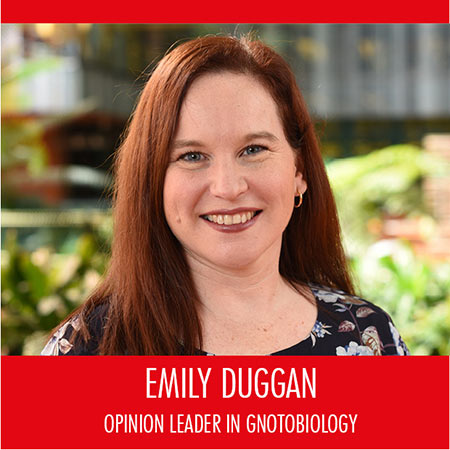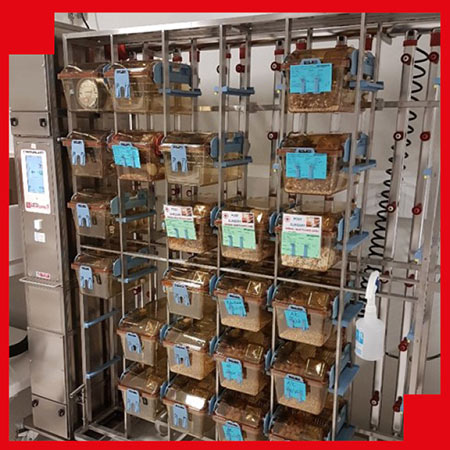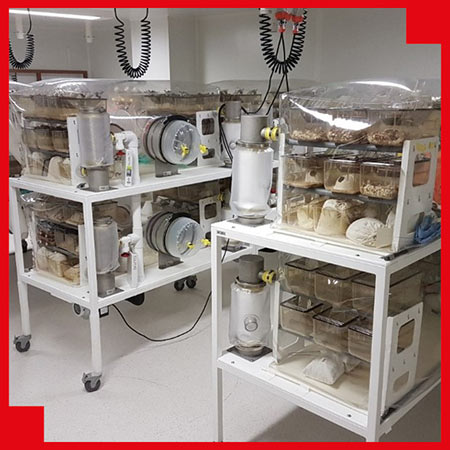
The current version of the Tecniplast website doesn't match your region. Please visit your local website to find information and offerings specific to your country.

The current version of the Tecniplast website doesn't match your region. Please visit your local website to find information and offerings specific to your country.

 Emily Duggan, opinion leader in gnotobiology, tells us about her experience as an author on moderngnotobiology.com blog.
Emily Duggan, opinion leader in gnotobiology, tells us about her experience as an author on moderngnotobiology.com blog.
Moderngnotobiology (link here) is a new blog aimed at operators who use germ-free and flora associated animals, provoking dynamic growing discussions among scientists, LAF managers and technicians.
All of them seem to appreciate this blog to get connected and share ideas, opinions, comments and all questions related to Gnotobiology topics, driving science research, procedural aspects and animal research models.
Emily Duggan, Senior Gnotobiotic Facility Coordinator UQBR, University of Queensland’s Translational Research Institute, took part in these interesting discussions when she authored an article.
Hi Emily, can you summarize your interesting contribution to this blog?
We began our Gnotobiotic facility in Australia in late 2016 along with a few other facilities interstate. There had previously only been one Gnotobiotic facility located in Melbourne, Australia running for a number of years prior. We realized that with the geographical challenges being so far away from North America and Europe that we would need to come up with inexpensive ways to ship mice between Australian facilities as opposed to importing them from international suppliers.
A solution was conceptualized when the TRI, WEHI and SAHMRI Gnotobiotic facilities collaborated together to develop and validate the use of Tecniplast Single Use Mouse Cages as a means of shipping germ-free/Gnotobiotic animals interstate whilst maintaining their germ-free or Gnotobiotic status.

In order to do this, we first had to make some minor modifications to the cage lids, as described in the article on the Modern Gnotobiology Blog. The cage lids were then heat sealed into polypropylene bags and sent for gamma irradiation to sterilize. Other components were either cold sterilized with chlorine dioxide or autoclaved. Mice are transferred from isolators to a biosafety cabinet in sealed sterile containers, and then aseptically packed into the sterile single use mouse cages. The lids are taped onto the base with sterilized tape, and then the entire cage is placed into an autoclaved regular animal shipper as an outer box for shipping.
We have found this method to be reliable and inexpensive when compared to standard methods of shipping germ-free mice in specialized shippers that connect to isolators.
In summary, the article I wrote describes this process in a more details manner.
Do you enjoy reading the blog and why? Is there anything you would like to improve or to add to the blog?
I think the blog is an excellent idea – everything in Gnotobiotics requires a high level of problem solving. We need to be able to convert standard bench top procedures to aseptic procedures that will not risk contaminating the animals. This can be challenging with new animal and experimental models so the ability to share ideas amongst the global Gnotobiotic community is vital to the success of this research area.
I would love to see more specific examples of particular experimental models and how they have been adapted to a germ-free or Gnotobiotic status. This often will involve specialized types of sterilization of materials to avoid contamination. Electronic devices can be particularly tricky in this regard.
How did the Covid-19 pandemic change your activities in your lab? Did you increase the activity?

We maintained a steady pace of work throughout 2020 and saw projects increase through the first half of 2021. Being located in Australia, we have been incredibly fortunate not to have seen the worst of Covid-19 and its effects.
We had one period of “lockdown” in the first half of 2020: for 5 weeks where we had to split our staff group in half in order to have redundancy should there be staff that became infected or directed into quarantine.
This was very challenging as we still had the same number of mice to look after and had a number of experiments running at the time.
How did Tecniplast products help you to manage activities during the last year of operations? Do you have specific recommendations for your colleagues?
We have been able to use the Tecniplast ISOCage-P cages extensively for running Gnotobiotic studies using both monoculture models as well as germ-free mice inoculated with human microbiota. In recent months we have adapted the use of the Tecniplast Greenline cages prepared and used aseptically in order increase the number of cages available to our facility researchers. Lange et al. published this method in Current Protocols in Mouse Biology in 2019 – as a result we adapted their methods and validated this in our own facility in late 2019. We ran a two-month trial and were able to keep mice germ-free for the entirety of the trial, confirmed by culture and 16S PCR. For these cages we would not recommend their use for germ-free of monoculture experiments due to a higher risk of contamination in these types of experiments, however we find the aseptic Greenline cages are useful for models where Gnotobiotic animals have a complex undefined flora that needs to be maintained (eg humanized flora). The mice are inoculated and colonized over a number of weeks in the standard ISOCage-P cages, but can then be transferred to aseptic Greenline cages for the longer term.
Can you tell me your pros and cons about virtual conferences?
I think virtual conferences have been a wonderful bonus that has come out of the pandemic. The software systems available seem to be doing a great job and it’s great to still be able to connect with other Gnotobiotic researchers across the globe. However, I can’t wait to attend FELASA 2022 to have face-to-face contact with the community! Fingers crossed that our travel restrictions in Australia have eased by then!
GUGLIELMO VISMARA - REGIONAL MANAGER ASIA-PACIFIC, TECNIPLAST S.P.A.